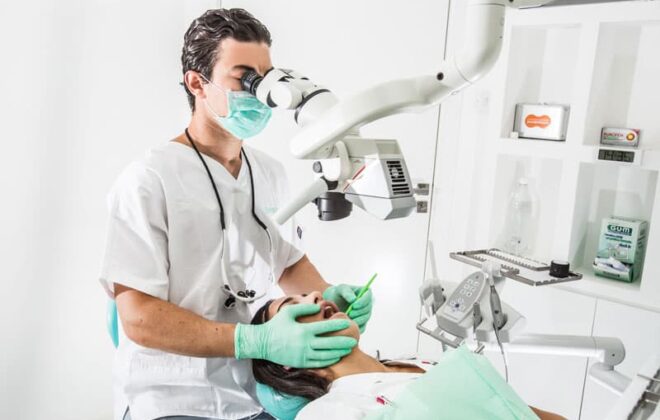Root Canal on a Crowned Teeth
If your dentist tells you you need a root canal or a crowned tooth, you are likely to be flabbergasted because commonly a tooth that has undergone root canal treatment needs a dental crown to protect itself. You may consider taking a second opinion from another dentist to understand how the tooth below the crown got infected to require a root canal.
You may have an issue to manage on your hands but a tooth with a crown can also rot if you do not floss properly below the crown. Plaque and bacteria can build up, affecting the tooth and causing the need for a root canal. You may curse the dentist for all he’s worth but unless to undergo root canal therapy on the crowned tooth you are likely to suffer from the pain associated with a root canal. Under the circumstances, it is suggested that you contact a root canal dentist or endodontist for the treatment rather than be concerned about the crown.
Why Does Tooth Decay Happen after a Crown Is Placed to Protect It?
The crown will be placed on the tooth to protect it from fractures and damages if it has already been weakened by injury, fracture, or a root canal. The first root canal performed on the tooth may have failed to cause the dentist to offer you further treatment to the tooth by another root canal.
The dentist will have two choices before him or her on how to perform the procedure with a crown on the tooth. The first choice is to remove the crown before drilling it to create and access the hole but in many cases, it is not possible. The second choice is to drill the access hole through the crown as it does not come off to access the pulp. In such cases, the crown needs to be replaced after the procedure because it would have been weakened with the drilling.
You will need a new crown after having the root canal because the structural integrity of the crown would have been compromised. The root canal performed can become reinfected again if the old crown is used. It is suggested always to remove the crown if possible to protect its integrity and allow the root canal procedure to be performed.
Dentists, unfortunately, have the challenging task of attempting to remove crowns by keeping them fully intact and unscathed. Even an attempt to do so can damage the crown as well as the tooth significantly.
Why Decay Affects a Crowned Tooth?
As mentioned earlier not maintaining proper oral hygiene and allowing plaque and bacteria to accumulate under the crown is one of the main reasons why tooth decay can get to crowned teeth. A crown fails because the decay affects the edge of the crown where it meets the gum line. The crown is resistant to decay but the tooth isn’t and therefore absorbs the plaque and bacteria that are accumulated. In such situations, the decay spreads rapidly below the crown.
When the decay is significant the tooth structure underneath the crown may not be sufficient to safeguard the pulp from being destroyed by the decay. In such cases simply having a new crown will not fix the tooth and therefore root canal treatment will become necessary along with a new crown if the existing tooth structure can be saved during the procedure.
What Happens When Placing a New Crown on an Affected Tooth?
More work will be required to place a new crown on a tooth that already had a crown on it because the margins or edges of the new crown will need to be deeper to cover the area from where the decay was removed after taking off the old crown. The procedure is complicated and is best handled by an experienced dentist or endodontist.
Dental crowns are long-lasting cosmetic restorations that, for the better part, will perform their role but they can eventually wear out. Decay under the crown usually causes the crown to fail. It is important that dentists detect early signs of decay at the edge of the crown when you visit them for regular checkups and cleanings. The dentist must be skilled and experienced to detect decay in the early stages on the edges of the crown and adopt measures to replace it to prevent infection to the root canal. However, if the decay has already affected the root canal, the options before you and the dentist are limited to having a root canal retreatment on the crowned tooth. The procedure for the root canal remains the same and the only difference lies in the crown that would be protecting the tooth to the edge of the gum line from where tooth decay would have infected you again to necessitate another root canal.
Article originally appeared at: https://townsquaredental.com/
Author: Town Square Dental



